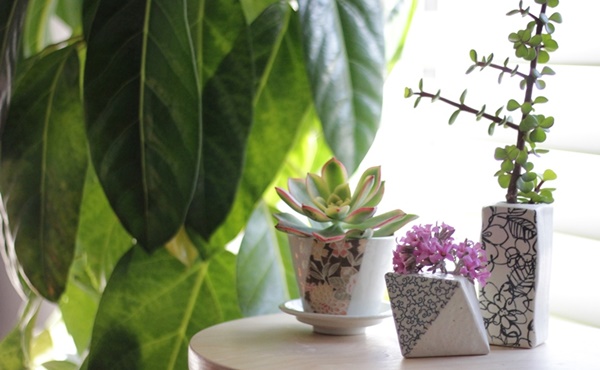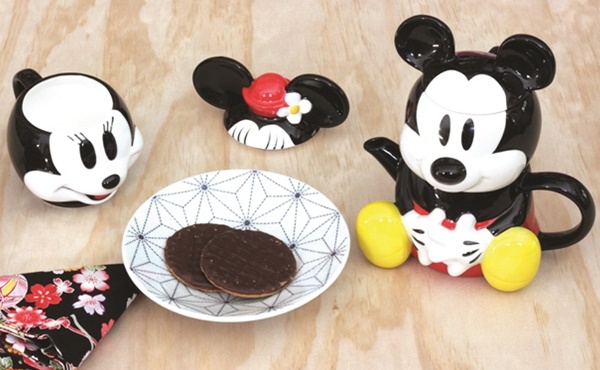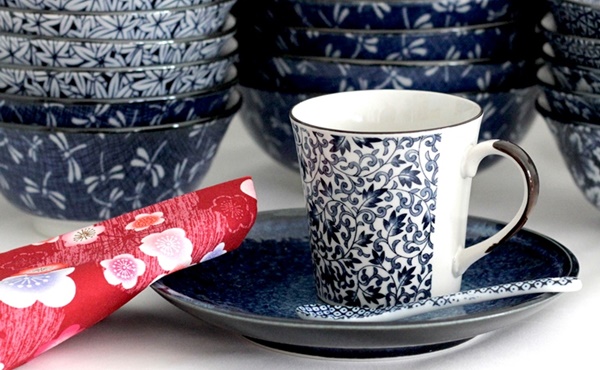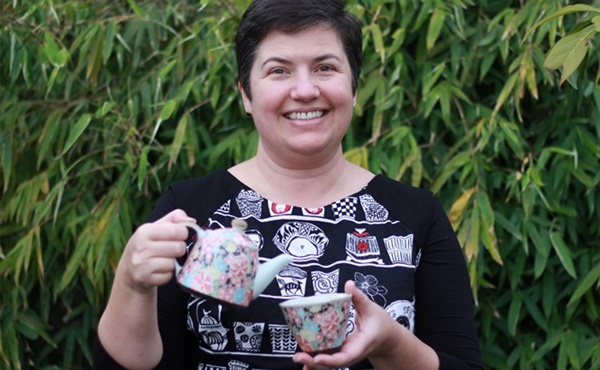There seems to be a real movement away from mass produced product and consumers are looking for something original and different, something that you don’t see in every other shop window.
People are much more aware of where their purchases come from and how they were made. Consumers are questioning fast fashion and similarly in the gift and homewares market, they want to know where the products are made and the business practices of the manufacturers.
“When you buy a J Style mug or set of dishes, you know it’s been made by hand by people who really love their small towns and their local family businesses,” says J Style co-founder, Jen Idosaka.
J Style’s range of Japanese made ceramics comes from small manufacturers, and it’s quite obvious that they are not mass produced. The Japanese aesthetic of wabi sabi―or appreciating imperfection in design―means we know they aren’t always perfect, and that’s exactly why people love them. To be able to see that a person made this mug, not a machine, and that their thumb print has left a little smudge on the handle in the process, makes them that much more appealing.
“Our Japanese manufacturers are small family owned companies and the employees are mostly women. There are a lot of mothers who work within school hours, and older women who have continued to work there into their 70s and 80s.

“In Japan it’s a given that the employees will be paid a fair wage, and they have excellent work conditions. In rural areas the ceramics industry has been operating in those small towns for hundreds of years and is often the backbone of the local economy.”
Idosaka and her husband moved to Australia 20 years ago. She was working for the Japanese Government, spending time visiting the gift fairs to find Australian businesses wanting to export to Japan, when she noticed a huge gap in the market for Asian style dinnerware.
“While brands like Noritake and Mikasa were bringing in Japanese made, but Western style dinnerware, no-one was supplying high quality Asian style ceramics. Even trying to fit out our own kitchen we struggled with dodgy teapots, and cheap noodle bowls from the back shelf of the Asian grocery.
“Australian retailers just didn’t stock a wide variety of style or design that was suited to serving Asian style food. You could find interesting handmade pieces at markets, but the majority of dinnerware was European style matching dinner sets.”
J Style’s focus has always been on sourcing unique and special items that others find too difficult to manage. Often the Japanese manufacturers are not keen on exporting or dealing with ‘foreigners’ because of the cultural and language barriers. Sometimes they’re keen but just don’t know how to get started.

“At every point, whether we are sourcing product or designing it, we look for things that are both practical and beautiful. Objects you use every day in the kitchen and around your house should brighten up your life, and at the same time they should be useful and practical.
“It could be a tea canister wrapped in stunning Japanese paper that you can enjoy using to store your favourite leaf tea, or a lovely ceramic bowl with a practical plastic lid that you can use over and over in the fridge, the microwave and the dishwasher, or a cat shaped mug on your desk that makes you smile every day.
“Every now and then we spot something in Japan that we think our retailers will love, so we’ll bring it in too. Sam is always extra keen if it’s light weight and not fragile. We’ve had great success over the years with small runs of kimono fabric hair clips, purses and bags. Japanese tea canisters are an ongoing line that came off the back of expanding on our teapot range. Right now it’s Japanese fabric napkins and wraps that are taking off. Overall, it always comes back to ceramics. They’re heavy and fragile and the small manufacturers are often tricky to deal with, but that’s our specialty.
“Years ago I asked one of our tea set manufacturers if they could make small bud vases. I really wanted one for myself and couldn’t find anything locally. I had a few large vases, but someone doesn’t often buy me big bunches of flowers,” she laughs.
“I was more likely to be given a few dandelions from the garden by my kids and have nowhere to put them. It turns out I wasn’t the only one keen on tiny vases and they’re now one of our biggest selling ranges. This year when Sam visited the manufacturer he saw how much they’ve expanded their range of bud vases and that they’ve just started to deal with a distributor in the US.

“There have been so many examples of where our little ideas to tweak products for the Australian market have led to expansion and further exports for our suppliers. It really helps to strengthen our relationships with them and make them more open to other new ideas. This year I’ve been encouraging them to go into small plant pots for indoor plants. As a crazy plant lady myself I’ve been drilling drainage holes in tea cups for a while already, so using that as a basis to design small plant pots has been a lot of fun.”
Idosaka adds that they still have to be aware of what will sell best for retailers in the Australian market. “When we started J Style, feedback from our customers veered our focus towards ornamental dishes (those little flower and leaf dishes) that could be used for candles and soaps. And teapots. Australians just can’t have too many teapots and that hasn’t changed.
“Twenty years ago, even though we really wanted noodle bowls ourselves, we struggled to sell them to retailers, and people didn’t know what to do with a tea cup with no handle. We’re lucky now that Australia’s dining culture is becoming more diverse. We’re getting more and more requests for those big noodle bowls and suddenly we can bring back lines we tried 15-20 years ago as if they are new.”
J Style’s designs are not always obviously Japanese. Simple blue and white bowls with stripes or floral designs can mix in perfectly with Italian or French or Persian tableware with a similar aesthetic. You don’t need to be serving Asian food or have any kind of Japanese theme to your décor to appreciate and enjoy the designs.
Japanese design itself is a real mix of old and new. On the one hand J Style imports ceramics with designs that have been produced for hundreds of years.

“I’ve been to museums and seen the same ‘kusa’ or vine designs as the ones on dishes and teapots that we sell now. The classic refined look of traditional Japanese design is as popular now as it was in the 1800s.
“On the other hand, the young designers of Japan really like to push the envelope and their enthusiasm for cute, quirky design is spreading to other countries. Japanese pop culture shows a completely different side of Japanese design. We know better than anyone how much Japan loves Disney and cute pop culture characters and that love is here in Australia too.”
With retail going through a digital revolution, J Style has also had to adapt to these changes including no more printed catalogues and updating the website several times a day. The company has even cut back on its trade fair attendance, only exhibiting once a year in August (Melbourne).
“The market has changed and retailers need new things in store more often than every six months at a trade fair,” explains Idosaka.
“We love meeting everyone face to face, but now that we’ve got 20 years of solid reputation in Australia, we’re finding the cost of the fairs is not giving us as much return as we are getting online and through more regular marketing throughout the year.
“Our retailers can login to our website and check stock availability, when out of stock items are due back in, and pre-order new product before it arrives in Australia. Automating the ordering process for our retailers and having all that information available to them whenever they need it is making a huge difference. If their customers want to order in particular products, retailers can get on their phone or computer and check the availability straight away.
“Our efforts to have the information available 24/7 are already paying off with much more interaction between customers, retailers and ourselves as wholesalers.”
Additionally, J Style’s retailers don’t need to mess up the aesthetic of their store by actually stocking ranges that don’t suit them, but they can order in product for customers on request for an immediate sale. For stores outside the major metropolitan areas, or those with a small floor space, this can be a great option. If their local customers know that they can get anything they want ordered in, it makes them much more likely to visit in store.







